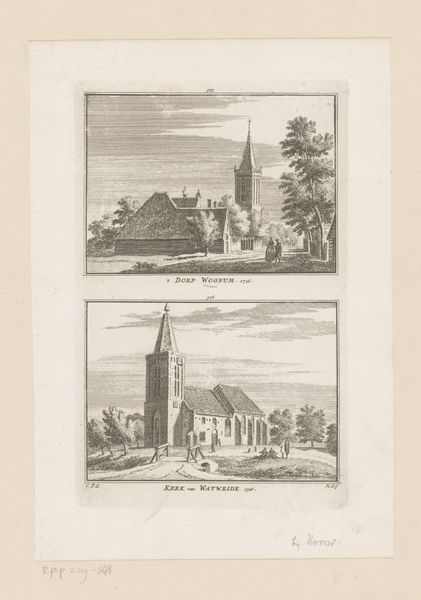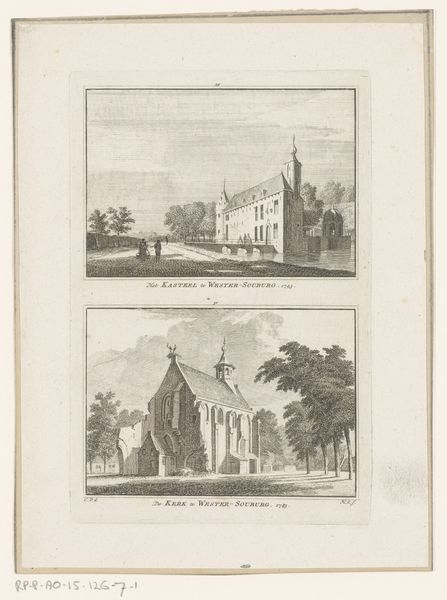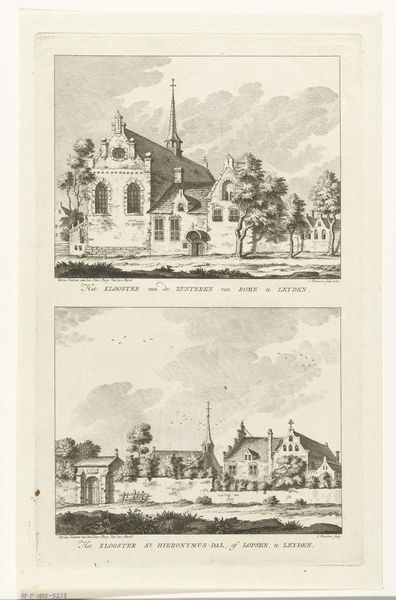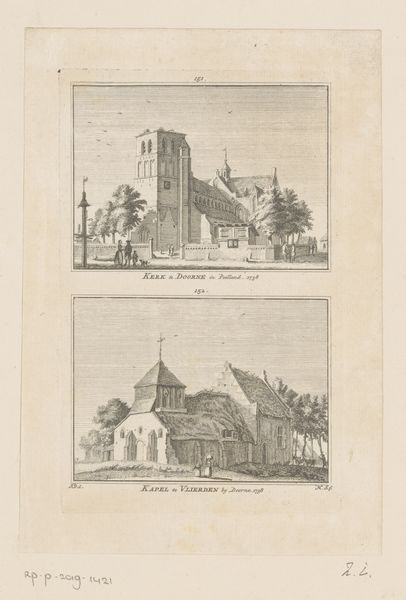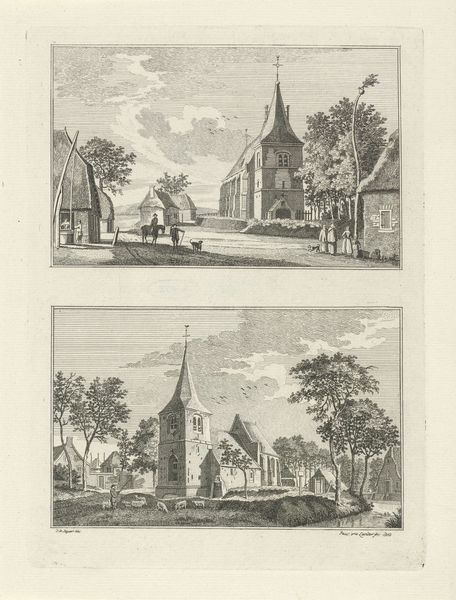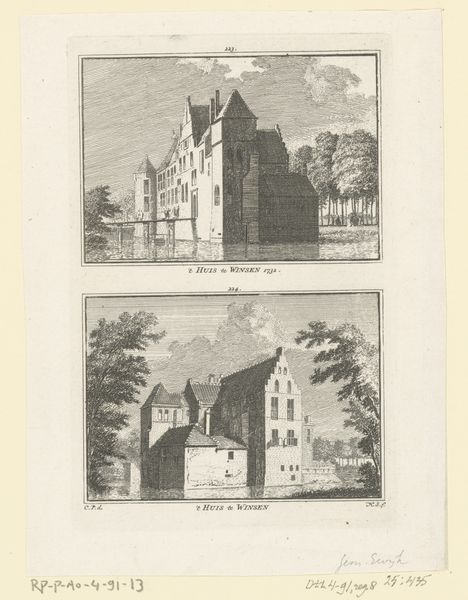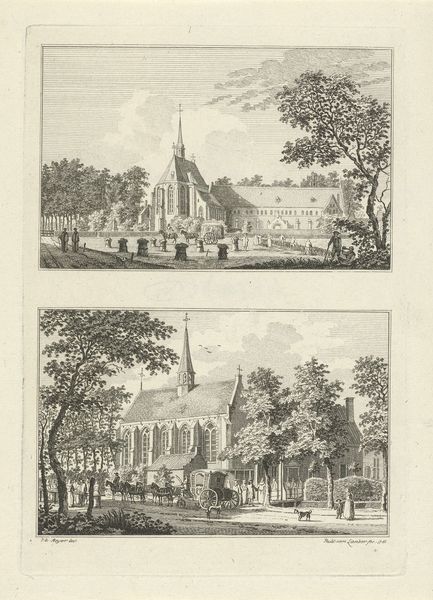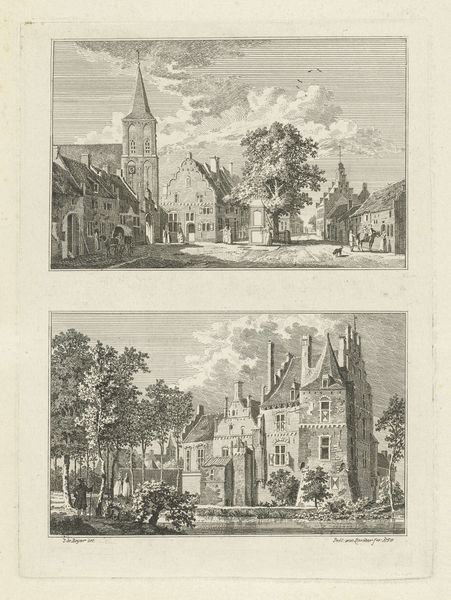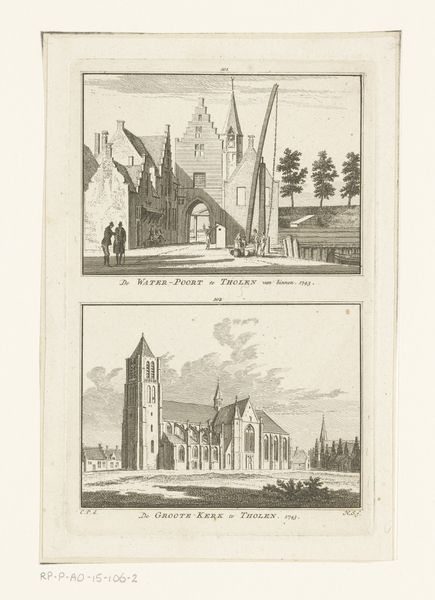
Gezicht op het dorp Hem en gezicht op de kerk te Venhuizen, 1726 1752 - 1792
0:00
0:00
hendrikspilman
Rijksmuseum
drawing, print, engraving
#
drawing
#
dutch-golden-age
# print
#
landscape
#
line
#
cityscape
#
engraving
#
realism
Dimensions: height 165 mm, width 106 mm
Copyright: Rijks Museum: Open Domain
Hendrik Spilman made this print, ‘Gezicht op het dorp Hem en gezicht op de kerk te Venhuizen’, in 1726. It’s an etching, which means that the artist used a sharp tool to draw through a coating of wax on a metal plate, before bathing the plate in acid. The acid bites into the exposed metal, leaving behind incised lines that hold ink. The controlled precision of this technique lends itself beautifully to architectural studies like this one. Spilman skillfully captures the textures of brickwork, tiled roofs, and foliage with remarkable clarity. Note the contrast between the sturdy, orderly church and the more rambling, organic arrangement of the village buildings. But what is the relationship between this print and the world it depicts? Etchings like this were relatively inexpensive to produce, and became popular as a way of documenting and disseminating views of places – almost like postcards. This image speaks to the rise of a mercantile class, one that had the means and the inclination to travel, and to collect images of the places they had seen.
Comments
No comments
Be the first to comment and join the conversation on the ultimate creative platform.
